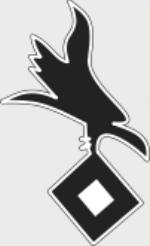Hobby Master HG5001 German Sd. Kfz. 7 8-Ton Personnel Carrier / Prime Mover - Regiment (mot) Hermann Goring, 11.Panzer-Division, Heersgruppe Sud, Eastern Front, Summer 1941 (1:72 Scale)
"We must do everything we can to promote anti-tank defense, and work just as hard to guarantee successful counter-attacks through the instrument of powerful tank forces of our own."
- Major-General Heinz Guderian, "Achtung Panzer!"
 Development of the Sd. Kfz. 7 can be traced back to a 1934 requirement for an 8-ton half-track. The vehicle first appeared in 1938 and was destined to be used mainly as the tractor for the 8.8cm flak gun. The Sd. Kfz. 7 was an extremely useful vehicle, employed both as a weapons carrier and prime mover by the Wehrmacht. They also saw service as observation and command posts for V2 rocket batteries. The vehicle could carry up to 12 men and a considerable quantity of supplies, as well as pulling up to 8000kg (17,600 lbs) of equipment. Most were fitted with a winch, which enabled them to pull smaller disabled vehicles out of mud or other quagmires. A mainstay of the German Army, the Sd. Kfz. 7 was even admired by the enemies of the Reich. In fact, the British tried to make exact copies of captured Sd. Kfz. 7s and some vehicles were appropriated for use by the Allies after World War II.
Development of the Sd. Kfz. 7 can be traced back to a 1934 requirement for an 8-ton half-track. The vehicle first appeared in 1938 and was destined to be used mainly as the tractor for the 8.8cm flak gun. The Sd. Kfz. 7 was an extremely useful vehicle, employed both as a weapons carrier and prime mover by the Wehrmacht. They also saw service as observation and command posts for V2 rocket batteries. The vehicle could carry up to 12 men and a considerable quantity of supplies, as well as pulling up to 8000kg (17,600 lbs) of equipment. Most were fitted with a winch, which enabled them to pull smaller disabled vehicles out of mud or other quagmires. A mainstay of the German Army, the Sd. Kfz. 7 was even admired by the enemies of the Reich. In fact, the British tried to make exact copies of captured Sd. Kfz. 7s and some vehicles were appropriated for use by the Allies after World War II.
Pictured here is a 1:72 scale replica of a German Sd. Kfz. 7 8-Ton Personnel Carrier / Prime Mover that was attached to Regiment (mot) Hermann Goring, then serving on the Eastern Front during the summer of 1941.
Sold Out!
Dimensions
Length: 3-3/4-inches
Width: 1-1/4-inches
Release Date: December 2011
Historical Account: "Private Army" - In early 1941, the Hermann Goring regiment was reorganized as a motorized regiment. During this time, it was redesignated Regiment (mot) Hermann Goring, as Goring had been promoted to Reichsmarschall. After this restructuring, the regiment was moved east to take part in the invasion of the Soviet Union. When Benito Mussolini's disastrous invasion of Greece caused the delay of Barbarossa and the German invasion of the Balkans and Greece, the regiment was stationed in the Romanian oilfields near Ploiesti to provide flak protection.
Barbarossa got underway on June 22nd, 1941, and during the campaign, the regiment was attached to the 11.Panzer Division, a part of Army Group South. The regiment saw action around the areas of Radziechw, Kiev and Brjansk, destroying many Soviet tanks with their 8.8 cm flak guns. At the end of 1941, the regiment was returned to Germany for rest and refit, having suffered moderate casualties in the campaign. The Schutzen-Bataillon Hermann Goring remained at the front until May 1942.
In July 1942, the regiment was upgraded to brigade status and re-designated Brigade Hermann Goring. In October 1942, while the brigade was still being restructured, it was decided to further upgrade the status of the Hermann Goring to a full division. The division would be organized along the lines of a Heer Panzer division. Goring arranged for veteran Heer panzer crewmen to be transferred to his division, and brought the mechanized infantry component up to strength with the addition of the 5.Fallschirmjager-Regiment.





 1/72 military
1/72 military 


